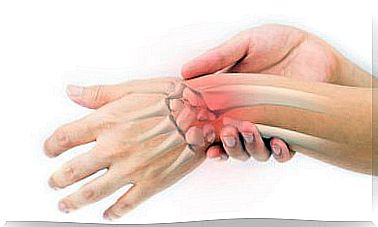Methylphenidate: What Is It And What Is It Used For?
Methylphenidate is a drug indicated for the treatment of attention deficit hyperactivity disorder. It is also used to treat postural orthostatic tachycardia syndrome and narcolepsy.
However, it can also be used, of course, always under medical prescription, to treat cases of fatigue and depression resistant to the usual treatments.
Knowing a little about the history of methylphenidate
The use of stimulants for the symptomatic treatment of narcolepsy dates back to the 1930s, when ephedrine and amphetamine began to be indicated.
Later, thanks to clinical research, significant progress was seen in hyperactive children who had been given amphetamines, specifically bencedrine. It was already in 1944 during World War II when methylphenidate was first synthesized.
During the war , many chemical variants of amphetamine had been experimented with, in the search for molecules with similar properties, but with fewer or milder adverse effects.
Later, the patent for methylphenidate was issued in 1954. The action of this drug on the human body revealed, with respect to the drugs of its class known to date, fewer neurovegetative side effects.
What is methylphenidate used for?
This drug belongs to the class of compounds with a piperidine structure. It increases the levels of dopamine and norepinephrine in the brain thanks to its ability to inhibit the reuptake of the respective monoamine transporters.
Methylphenidate has a similar structure to amphetamine, but it is not neurotoxic. In this way, its effects are not the same either. Let’s see in more detail for which pathologies this drug is indicated.
Attention deficit hyperactivity disorder or ADHD

It is a neurobiological disorder originating in childhood, affecting more than 5% of children in the world. The exact causes of the development of this disease are currently not known. The possibility that it is a combination of various risk factors that act together is evaluated.
However, although the exact causes are not known, it has been identified that genetic and environmental factors have a great influence on its development. Furthermore, attention deficit hyperactivity disorder has a 76% chance of being inherited.
On the other hand, regarding the characteristic symptoms of this disease we can mention 3 core symptoms:
- Attention deficit.
- Hyperactivity
- Impulsiveness.
For these symptoms to be associated with ADHD, certain conditions must be met:
- They must be submitted before the age of 7.
- Stay in time for at least 6 months.
- They must affect two or more areas in the child’s life.
- Have a significant impact, deteriorating your performance significantly.
Postural orthostatic tachycardia syndrome
This syndrome is characterized by dizziness or a feeling of fainting in the person who suffers from it. It is triggered when the autonomic nervous system does not work properly.
In postural orthostatic tachycardia syndrome, the blood vessels do not contract enough to ensure an adequate supply of blood to the brain.
In this way, to try to maintain a sufficient blood supply for the proper functioning of the brain, the autonomic nervous system causes the heart to increase the frequency of its beats and tachycardias appear.
This disease, for which methylphenidate is indicated, can occur for the first time after having a virus infection or after an injury. However, it is very difficult to know if one of these circumstances is the triggering cause of this condition.
Research is currently underway to better understand the cause of postural orthostatic tachycardia syndrome.
Narcolepsy

This disorder is characterized by extreme daytime sleepiness and sudden bouts of sleep. People with narcolepsy often have a hard time staying awake for long periods of time regardless of the circumstances.
As with the other two conditions, the specific cause of narcolepsy is unknown. However, it has been seen that patients with this disorder have low levels of hypocretin. It is a substance in the brain that helps regulate waking and sleeping states.
Conclution
Methylphenidate is a prescription drug, primarily for the treatment of attention deficit hyperactivity disorder. It is also used to treat other pathologies.
You must follow the doctor’s guidelines and the pharmacist’s recommendations, since it is a drug that has serious adverse effects and that misuse of it could have serious health consequences.









